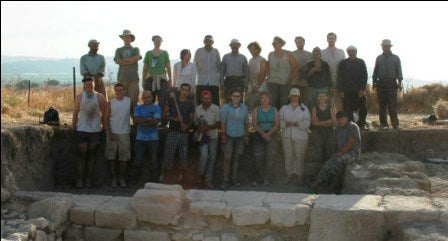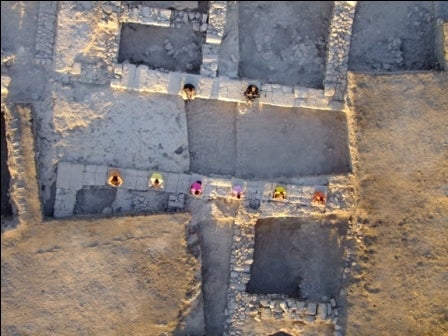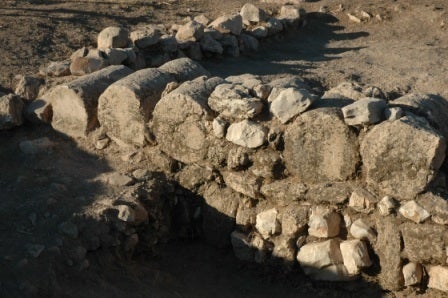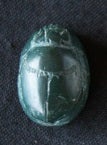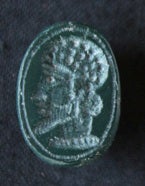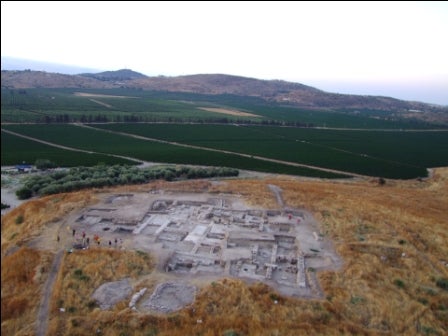2009 was supposed to be our last season excavating before we got down to the business of full study and publication of our finds, but discoveries from 2008 – most notably the realization that the eastern third of the Persian and Hellenistic Administrative Building (PHAB) was not dedicated to domestic quarters as we had thought – led us to reevaluate both our excavation timeline and interpretation of the function and organization of the building. Our excavation plan in 2009 was therefore to test our new hypothesis regarding an eastern entrance to the building, refine our architectural plans for all three major phases of building use (Persian, Hellenistic, and final-Hellenistic (‘squatter’)), and clarify how different spaces of the building were used at different points in its lifetime. We also gathered a lot more evidence about the appearance and use of the building in the Persian period.
A major realization of 2009 occurred halfway through the season. The discovery of two Persian period stylobates – monumental platforms on which columns were set – in the eastern third of the PHAB helped us see that the major entrance to the PHAB in the Persian period was from the east through a series of three open courts leading to the largest, western court. While the columns which sat on these stylobates were re-used in the Hellenistic walls (we had always wondered where they were originally!), the stylobates themselves continued to be used, but as walls, in the Hellenistic period. The footprint of the stylobates and associated rooms takes up much of the space previously thought to be domestic, meaning that nearly all the building must have been public or semi-public space dedicated to administration.
Architecture wasn’t the only thing that told us about the Persian phase of the building in 2009: we also found a green jasper scaraboid seal. One side of the seal is an Egyptian-style scarab, and the stamping surface is a Persian-style bearded male. This seal is the Persian (5th-4th century) corollary to the Hellenistic (2nd century) sealings we found in 2000 and gives us further evidence that the PHAB was indeed used for administration in the Persian period as well.
A particular treat at the end of the excavation season was a visit from SkyView Photography Ltd., an Israeli company which mounts a camera in a small helium blimp to take aerial photos of archaeological sites. While it involved a lot of preparatory cleaning on the ground, the view of the site from the air helped us appreciate the scale and layout of the building and its position in the surrounding landscape in totally new ways.


